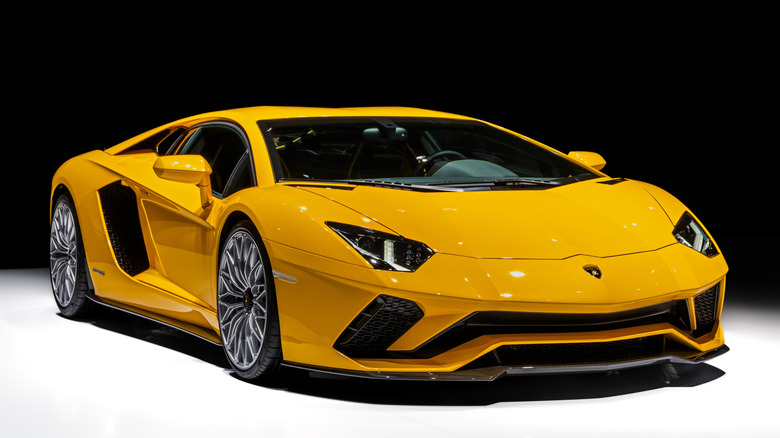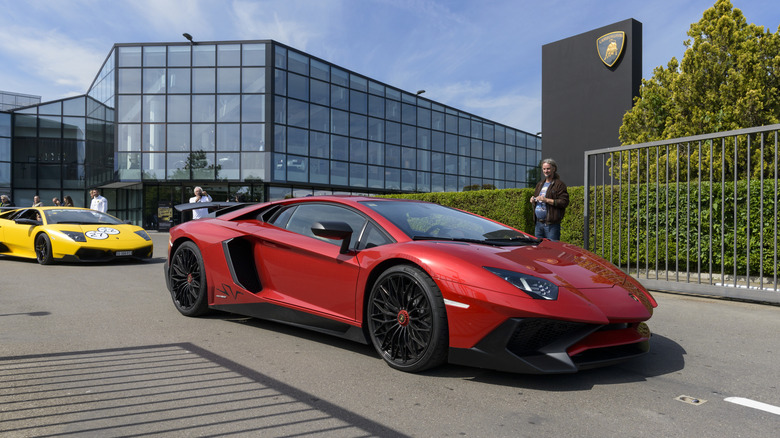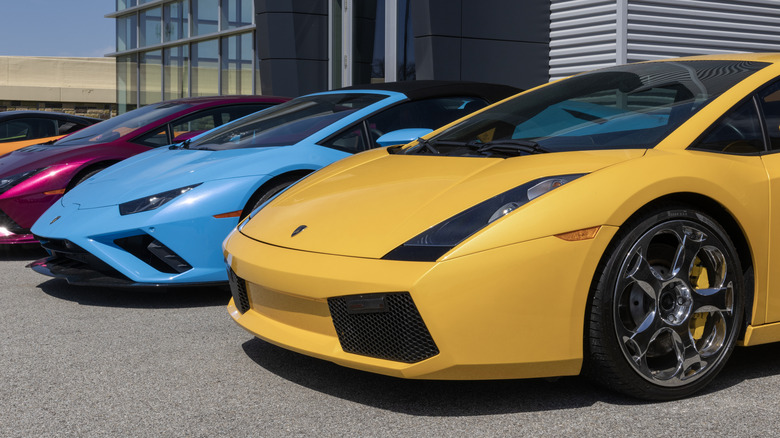Who Owns Lamborghini And Where Are The Cars Built?
Italian supercar brand Lamborghini is known for its menacing-looking, ultra-fast models and is arguably one of the most popular automobile brands in the world. It commands the same respect as other notable modern-era supercar companies like Ferrari, Porsche, Buggati, and Aston Martin.
Today, the company has a wide variety of products in its arsenal, including the 2024 Lamborghini Revuelto, the Huracan, the Urus SUV, and the upcoming Lamborghini Temerario. The best Lamborghinis of all time are counted among the most loved and popular supercars ever, including the Lamborghini Miura, Countach, Diablo, Murcielago, Gallardo, and the Lamborghini Reventon.
Tracing its origins back to the 1960s, Lamborghini has had a tumultuous and eventful history, with the company changing ownership nearly half a dozen times within a relatively short window of 30 years. Call it a stroke of luck or sheer resilience, but despite being faced with several challenges, Lamborghini cars have been continuously manufactured at the same facility in Italy where the first Lamborghini car was assembled. Since 1998, Lamborghini has been under the ownership of the Volkswagen Group, which made it a part of Audi. The partnership has worked wonders for the brand, and over the past two decades, the company has become one of the most integral and well-recognized entities of the Volkswagen Group.
Where does Lamborghini make its cars?
Before Ferrucio Lamborghini began building supercars, he built tractors. As a successful businessman, he also owned a Ferrari sports car. However, as the story goes, he faced multiple issues with the clutch on his Ferrari and ended up paying a visit to Ferrari's founder, Enzo Ferrari, to make some complaints. Ferrari not only paid no heed to Ferrucio's feedback, he insulted the tractor maker for making, well, tractors. Filled with rage and disappointment, Lamborghini immediately set to work creating the company we know today as Automobili Lamborghini.
The very first thing Lamborghini had to do to create his own supercars was build a manufacturing facility. This facility, located in Sant'Agata Bolognese, was constructed in just eight months and remains active to this day. It last underwent an expansion in 2015 that enhanced its production capacity to over 7,000 units a year, effectively doubling its capacity.
This expansion saw the size of the plant expand from 80,000 square meters to 160,000 sq. meters. Today, this facility is where the company's current supercar lineup, as well as the Urus SUV, is manufactured.
The tumultuous ownership history of Lamborghini
Within a decade of the founding of Lamborghini, its founder found himself facing financial difficulties, primarily owing to the oil crisis and related financial downturn of the 1970s. He was left with no option but to sell the majority stake in his company to Georges-Henri Rossetti, a Swiss businessman, in 1972, starting a chain of events that wouldn't end until 1998. Two years later, Lamborghini sold the remaining 49% of his stake in the company to another Swiss businessman named René Leimer, thereby completely dissociating from the company he originally founded. Lamborghini's new owners could not rescue the company through the '70s, leading Lamborghini to finally declare bankruptcy in 1978.
This bankruptcy resulted in the company coming back to the Italian government, which ended up giving ownership of Lamborghini to brothers Jean-Claude and Patrick Mimran in 1980. The brothers helped Lamborghini stage a comeback of sorts with the launch of the Lamborghini Jalpa and an updated iteration of the Countach. After running the company for nearly 7 years, the Italian brothers sold Lamborghini off to Chrysler, where Lamborghini remained until 1994.
That year, Chrysler sold off Lamborghini to an unlikely suitor — a joint venture called Megatech, which was the result of a collaboration between a Malaysian company called Mycom Setdco and Indonesian group V'Power Corporation. These new owners would control the company for four more years, following which Lamborghini caught the attention of Audi — a subsidiary of Volkswagen — who purchased it for a reported $110 million in 1998.


